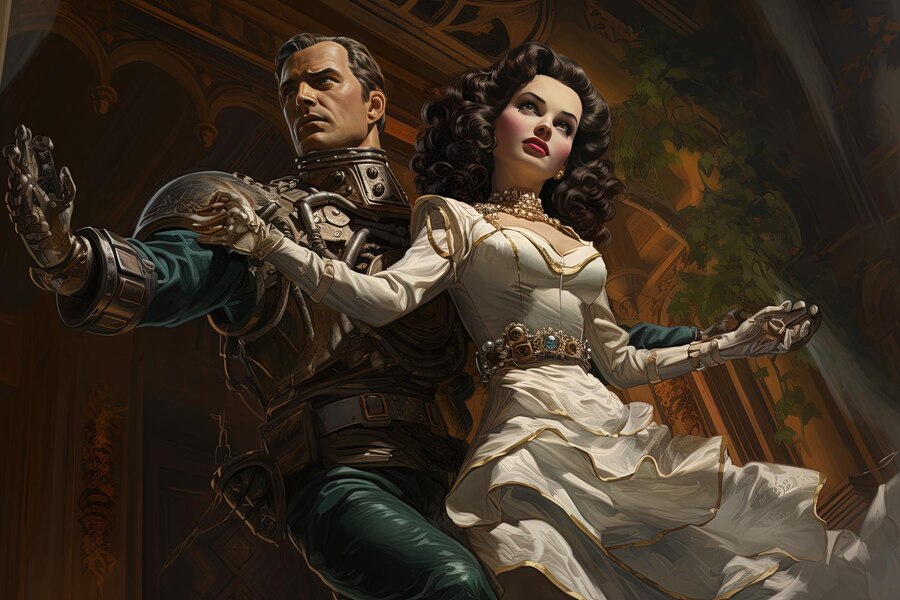Théodore Géricault, a pioneering French artist of the Romantic period, is celebrated for his powerful and emotive works that often explored themes of heroism, suffering, and the human condition. Born in Rouen in 1791, Géricault showed an early interest in art, studying under Carle Vernet and Pierre-Narcisse Guérin. His short but impactful career was marked by an intense focus on dramatic subjects and a masterful command of movement and expression.
One of Géricault’s earliest and most acclaimed works is “The Charging Chasseur” (1812), also known as “Officer of the Imperial Guard.” This painting, completed when Géricault was just 21, showcases his fascination with the military and his skill in depicting dynamic action. The piece features a mounted officer in the heat of battle, turning to look back over his shoulder with an expression of defiance and urgency. The sense of motion is palpable, with the horse rearing and the soldier poised for combat, embodying the Romantic ideal of the heroic and solitary figure. The vibrant use of color and dramatic lighting highlight the intensity of the moment, making it a vivid example of Géricault’s burgeoning talent.
Following “The Charging Chasseur,” Géricault continued to explore military themes with Theodore Gericault’s “Officer of the Hussars” (1814), a work that further established his reputation as a formidable talent. This painting, often paired in discussion with “The Charging Chasseur,” portrays another military figure, this time an officer of the Hussars, a light cavalry unit known for their flamboyant uniforms and daring tactics. The officer is depicted in full regalia, exuding confidence and martial prowess. Unlike the dynamic action of the Chasseur, the Hussar officer is more static, yet the painting retains a sense of tension and readiness. Géricault’s attention to detail in the officer’s uniform and the strong, angular composition reflect his deepening commitment to realism and the Romantic emphasis on individualism and the heroic spirit.
Géricault’s magnum opus, however, is “The Raft of the Medusa” (1818-1819), a monumental work that has secured his place in art history. This painting depicts the harrowing aftermath of the wreck of the French frigate Méduse, which ran aground off the coast of Senegal in 1816. The tragedy, marked by government incompetence and resulting in a scandal, became a symbol of human suffering and endurance. Géricault’s work, based on extensive research and firsthand interviews with survivors, captures the raw emotion and desperation of the shipwreck’s aftermath. The composition, with its stark contrasts and intricate detail, draws viewers into the chaos and horror experienced by the survivors. The use of light and shadow, combined with the dramatic poses of the figures, creates a powerful narrative of despair and hope. The painting’s political and social commentary, coupled with its technical mastery, make it a cornerstone of Romantic art.
In addition to his large-scale historical paintings, Géricault was also a keen observer of the human condition, often portraying marginalized and suffering individuals with empathy and depth. His series of portraits of the insane, created around 1822-1824, is a poignant example of his interest in psychological states and human diversity. These portraits, commissioned by Dr. Étienne-Jean Georget, a pioneer in psychiatry, depict patients with various mental illnesses. Géricault approached these subjects with a sense of dignity and respect, capturing the individuality and humanity of each sitter. The series is notable for its absence of caricature or condescension, a testament to Géricault’s compassionate eye and his commitment to realism.
Géricault’s fascination with horses is another significant aspect of his oeuvre. He was an accomplished equestrian and often used horses as subjects in his work, exploring their grace and power. His studies of horses, both in paintings and sketches, reveal his deep understanding of anatomy and movement. Works such as “Horse Devoured by a Lion” (1820) and “Derby of Epsom” (1821) illustrate his ability to convey the physicality and drama of equestrian subjects. These pieces are characterized by dynamic compositions and a keen attention to detail, showcasing Géricault’s technical prowess and his Romantic sensibility.
Despite his relatively short life—Géricault died at the age of 32—his influence on subsequent generations of artists was profound. His commitment to capturing the emotional and psychological depth of his subjects, his innovative compositions, and his willingness to tackle challenging and often controversial themes set him apart from his contemporaries. Géricault’s work laid the groundwork for the later developments in Romanticism and Realism, inspiring artists such as Eugène Delacroix and Gustave Courbet.
Géricault’s legacy is not only preserved in his paintings but also in his contributions to the evolving art movements of his time. He challenged the academic conventions of the day, pushing the boundaries of what was considered acceptable subject matter and technique. His work is characterized by a raw, unfiltered approach to depicting reality, whether in the portrayal of noble warriors or the harrowing plight of shipwreck survivors. This unflinching honesty and emotional intensity continue to resonate with audiences today.
In conclusion, Théodore Géricault’s body of work represents a significant chapter in the history of art, characterized by its emotional depth, technical skill, and innovative approach to subject matter. From his early military portraits to his monumental historical paintings and sensitive portrayals of the marginalized, Géricault demonstrated a remarkable ability to capture the complexities of the human experience. His legacy endures not only in the masterpieces he created but also in the lasting impact he had on the direction of modern art.
